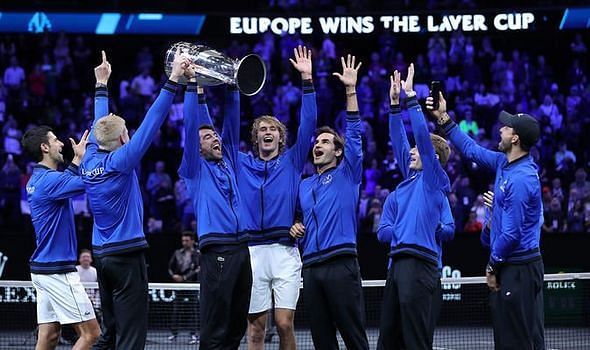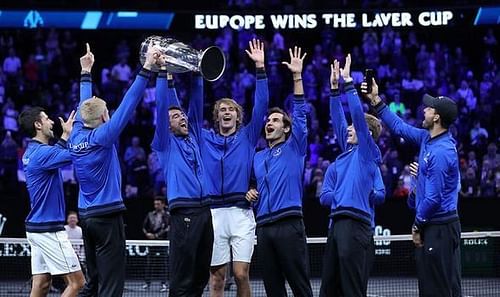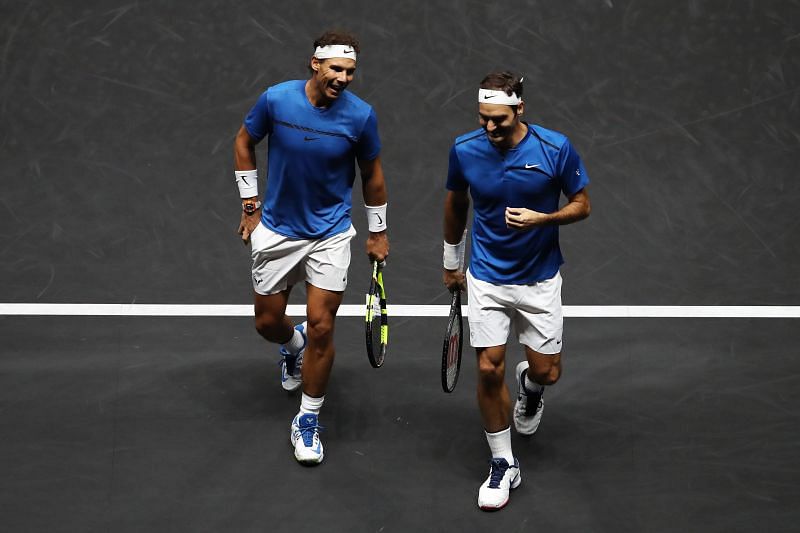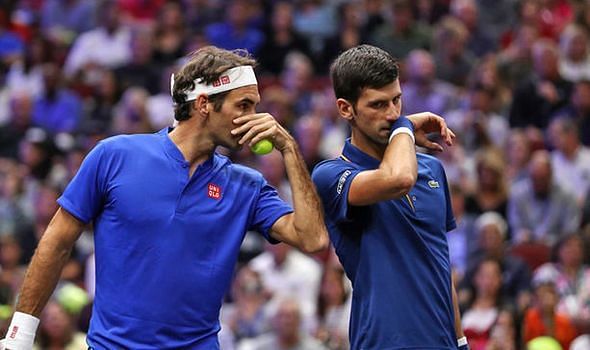
The Laver Cup as a product is here to stay

The Laver Cup, purportedly tennis' equivalent of golf's famous Ryder Cup team tournament, features the six best players of Europe against their six best counterparts from the rest of the world.
The tournament, conceived in 2016 by Roger Federer, celebrates the illustrious career of Rod Laver, the only player in tennis history to win the calendar-year Grand Slam in 1969.
Fist pumping players, enthusiastic celebration from team members, raucous sell out crowd and on-court coaching by team members add to the unique atmosphere of the Laver Cup. The camaraderie of team members, who almost always play as individuals throughout the year, creates a compelling scene seen nowhere else on the tour.
Critics' apprehensions about the reduced intensity of matches and the prospect of top players treating the event like a glorified exhibition due to the absence of ATP ranking points, turned out to be unfounded as the inaugural edition of the Laver Cup in Prague was a roaring success. The tantalising prospect of witnessing Roger Federer and Rafael Nadal on the same side of the court in the Czech capital caught the imagination of the tennis world and aroused spectator curiosity.

Sascha Zverev violently smacked his racquet after unforced errors and Nick Kyrgios shed tears after squandering a match point in a defeat to Roger Federer. Was it manufactured passion or a staged show? No way!
The Laver Cup exemplified pure player emotions like at any other regular tournament on the calendar, thereby eliminating any lingering scepticism about the supposed competitiveness and intensity of the matches.
Interest in the Laver Cup soared in the second edition of the event at 2018 Chicago when Novak Djokovic joined Team Europe and partnered with Roger Federer in another rare doubles team featuring two multiple-time Grand Slam singles champions on the same side of the court.
Unique in many ways

The unique scoring system of the three-day Laver Cup, where points for wins are accorded equal to the matchday they are played on (wins are worth one point on the first day, two points on the second day and three points on the third day), ensures no tie is over even if a team sweeps the opening eight matches.
Team captains are required to brainstorm with their team members and handpick the right player to take on a specific player from the opposition, as each of the six players in a team need to appear in at least one singles match over the three days of competition and no player can appear in more than two matches. Doubles matches, which carry a quarter of the total points on offer, also require pairings to be astutely formulated, as four of the players need to feature in the three doubles matches and no doubles team can play twice.
Over the three editions of the Laver Cup, 7 out of 13 match wins (54%) for the 'on paper' weaker World team have come in doubles. The corresponding number of doubles wins to total wins for the star-studded Team Europe is a paltry 2 out of 22 (9%). Team World's success % in doubles clashes (7/9 = 78%) at the Laver Cup rivals Team Europe's success % in singles (20/26 = 77%), thereby levelling out the uneven playing field to a great extent.
The format of the competition creates an intense tennis spectacle and lends itself to upsets, as was evident in Rafael Nadal losing to John Isner at 2017 Prague and Novak Djokovic being upset by Kevin Anderson at 2018 Chicago.
Popular among fans
83,000 spectators thronged through the gates of the O2 arena in Prague for the inaugural edition of the Laver Cup. Chicago 2018 drew in 93,584 fans for the three-days of competition. The average over 31,000 per day in the States was a shade below Wimbledon’s daily average of 36,000.
“Across its first two years, it’s been easy to see that the Laver Cup has struck a chord with fans worldwide in a very short time,” ATP Tour president Chris Kermode remarked, before ATP embraced the Laver Cup into its fold in May 2019.
It turned out to be a well-informed decision by a man who successfully oversaw the transition of the year end ATP finals from Shanghai to London in 2009 and is aware of the challenges in hosting tournaments of a significant pedigree and spectator interest.
85,000 tickets were sold out for the third edition of the three-day extravaganza at the Palexpo in Geneva which only confirmed the Laver Cup's growing popularity and the success of the product.
The Laver Cup as a product is surely here to stay, as the big-three of Roger Federer (38), Rafael Nadal (33), and Novak Djokovic (32) would continue to pull in the crowd.
But in the years to come, as the big-three recedes beyond the horizon, the onus of growing the Laver Cup's stature and ensuring its presence as a successful event on the ATP calendar would shift to the younger players like Sascha Zverev (22), Stefanos Tsitsipas (21), and Denis Shapovalov (20).